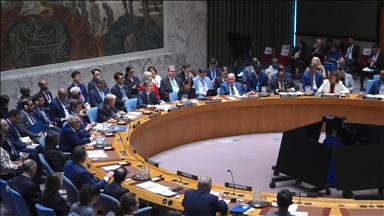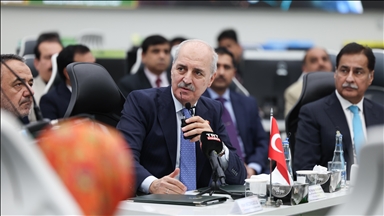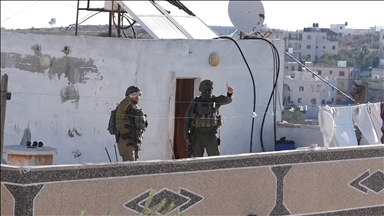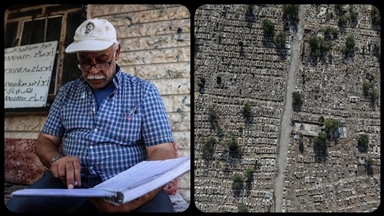Relatives search for signs of loved ones in Syrian cemetery left in ruins by Assad regime
Yarmouk Camp ‘held symbolic importance as the capital of the diaspora. The graves were systematically erased to eliminate this role and to conceal traces of the Israeli soldiers,’ says official responsible for cemetery
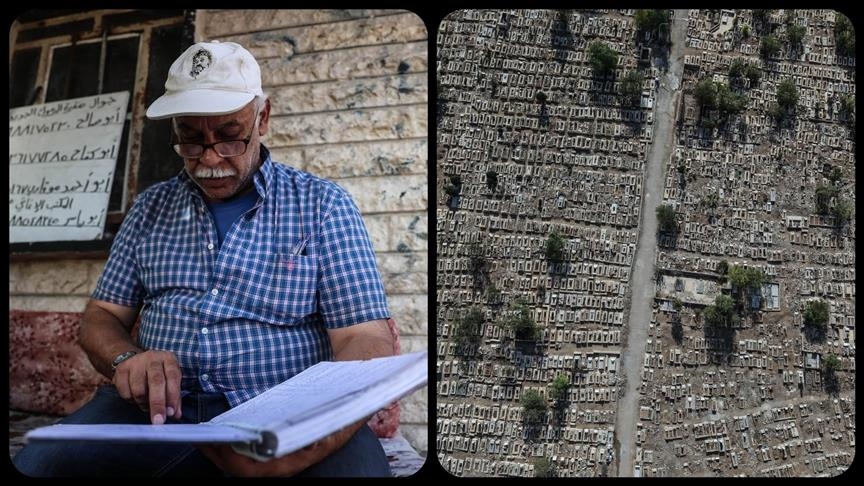
DAMASCUS/ISTANBUL
Residents of the Yarmouk Camp in Syria’s capital Damascus are trying to locate the graves of their relatives in the Yarmouk Cemetery, left destroyed by the deposed Bashar al-Assad regime and its supporters.
The bodies of Israeli soldiers killed in the 1982 Battle of Sultan Yacoub, which took place in Lebanon’s Bekaa region near the border between the Israeli army and Syrian forces, were buried in the old Martyrs’ Cemetery of Yarmouk Camp.

After besieging the camp in 2013, the regime’s forces conducted search operations in the cemetery to locate the remains of the Israeli soldiers buried there. During these operations, gravestones were broken and their locations were altered.
In the cemetery, where 140 people who died of starvation during the Assad regime’s siege of Yarmouk Camp are also buried, lie the remains of those who died during the 1982 Beirut siege as well as relatives of Yarmouk residents.
While camp residents suffer the pain of not being able to find their loved ones' graves, efforts are underway to reidentify the burial sites.
Nael Hamid Abu Yaser, the official responsible for the camp cemeteries, told Anadolu that a newly established cemetery began to be used after the destruction caused by the Assad regime and its supporters.
Explaining that gravestones in the old cemetery were broken and relocated, Abu Yaser said the cemeteries were deliberately targeted.
“This destruction was not random. The camp held symbolic importance as the capital of the diaspora. The graves were systematically erased to eliminate this role and to conceal traces of the Israeli soldiers,” he said.
Noting that Russian forces had settled in the area during the regime, Abu Yaser said “the regime and its supporters dug up graves until they found the graves of the Israeli soldiers and handed them over to the Israeli government. After the bodies were removed, the grave markers were completely eliminated. As a result, it became impossible to know who was buried where.”
He noted the immense suffering of families who are trying to find their relatives' graves.
“Some families search using old photographs, but most find no answers. We are working to restore the records we can access and officially reinstall the gravestones.”
Abu Yaser said there is a special section in the cemetery for those who died of starvation during the camp siege.
“Right behind me is the Section of the Starved. At that time, regime commander Issam Zahreddine, who besieged the camp, did not allow even a grain of rice inside. Because of this, more than 140 people died of hunger.”

In another section of the cemetery lie the fighters who were martyred during the Beirut siege.
“This is where 82 martyrs are buried. Some are known by name, while others are unknown. Palestinians, Arabs and Syrians were buried side by side,” said Abu Yaser.
Yarmouk Camp
Yarmouk was established in 1957 south of Damascus for Palestinian refugees.
The camp became a settlement inhabited by over 100,000 Palestinians, and since the outbreak of the Syrian civil war in 2012, it witnessed intense clashes.
Cemeteries, hospitals, schools, residential areas and infrastructure in Yarmouk Camp were damaged. Today, the camp remains largely destroyed due to bombardments.



